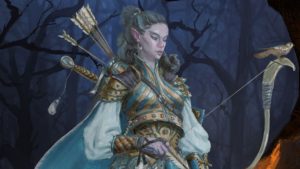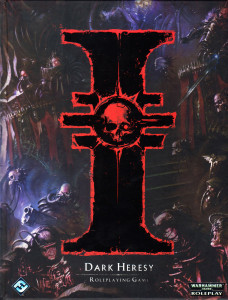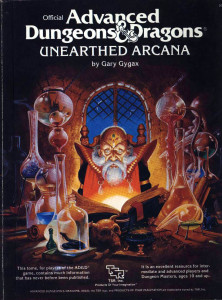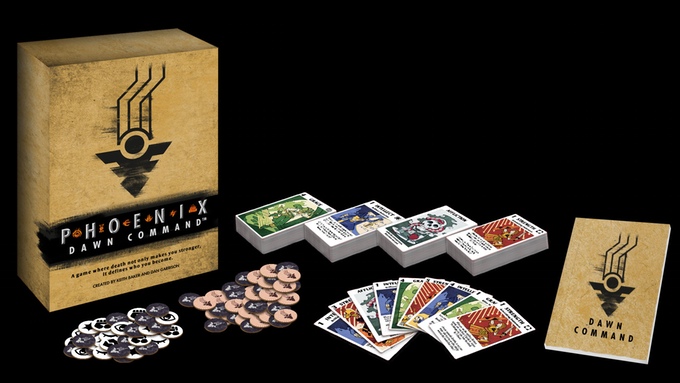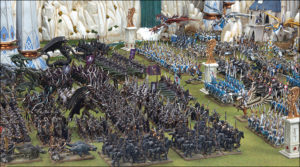
Mass combat, via
Last week’s Unearthed Arcana covered Mass Combat for the second time since the series launched at the beginning of Dungeons & Dragons 5th Edition. Behind only the Ranger class, it is the second most-covered subject of the series, meaning D&D’s designers feel there is a gap in players’ expectations and the rules as written.
Frankly, I don’t care much for either entry, as both sets of rules offer too much unnecessary crunch to a game that’s elegant and streamlined. I don’t have any particular gripe with the rules they’ve presented (though they’re more complicated than just using a swarm, for no real benefit), but rather with the fact that any rules are presented at all. Simply put: most RPGs, including D&D, don’t need them. However, this latest Unearthed Arcana does capture the most important element for running exciting mass combats, buried in the very final section: Critical Events. An RPG should focus on the moments where the characters’ actions influence the direction of the story most, and these inflection points–Critical Events, in the parlance of the UA article–should be the point of focus for the rules and the Gamemaster.
To illustrate this thesis, think of the Trojan War. It’s a story that has been retold a thousand times, but can you recall anything about troop formations or the tide of the broad battle at any given point? The Greeks attacked and the Trojans held firm. Alternatively, think of the battle between Hector and Patroclus; Hector famously slew Patroclus, believing he was Achilles for he had donned Achilles’ armor. Achilles, on learning of Patroclus’ demise, entered the battle in earnest and turned the tide in the Greeks’ favor. More to the point, if you were retelling the story at a tabletop, would you rather focus attention on the minute movements and formations of the regular Greeks and Trojans, or on the epic duel that led to the entry of the Greek’s greatest champion and, ultimately, the demise of Troy? To borrow from the silver screen, would you rather focus on the naval battle around the Second Death Star, or the Millennium Falcon’s bombing run into its core?

